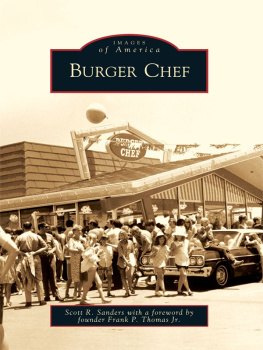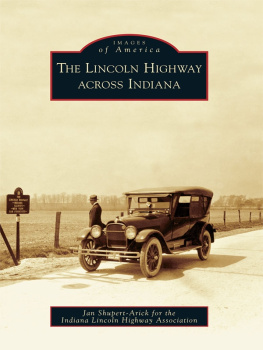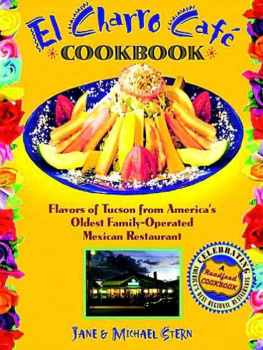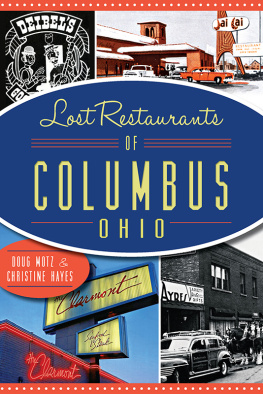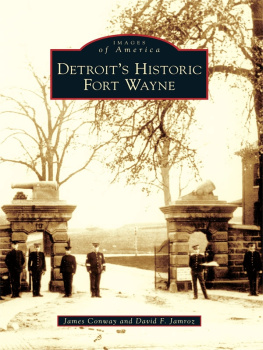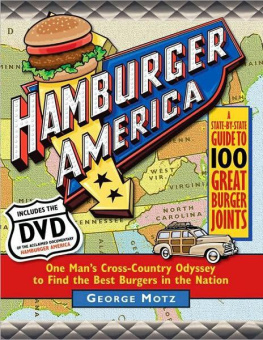

Published by American Palate
A Division of The History Press
Charleston, SC
www.historypress.com
Copyright 2019 by Keith Elchert and Laura Weston
All rights reserved
Front Cover (clockwise from top left): Zestos (Authors collection), the Hobby House (News - Sentinel), Jack & Johnnys (Authors collection), Coney Island (News-Sentinel) and Gardners (Randy Harter).
First published 2019
e-book edition 2019
ISBN 978.1.43966.673.9
Library of Congress Control Number: 2018966324
print edition ISBN 978.1.62585.954.9
Notice: The information in this book is true and complete to the best of our knowledge. It is offered without guarantee on the part of the author or The History Press. The author and The History Press disclaim all liability in connection with the use of this book.
All rights reserved. No part of this book may be reproduced or transmitted in any form whatsoever without prior written permission from the publisher except in the case of brief quotations embodied in critical articles and reviews.
Contents
Acknowledgements
We would like to thank the following people for their assistance, whether it was with brainstorming, with photographs or with information: Bob Baker; Daniel Baker; John Beatty, of the Allen County Public Library; Lauren Caggiano; Walter Font, at the History Center; Jeff Harvey; Jill McDevitt and Andrea Kern, of ARCH; Brad Saleik; John Stein and Brian Tombaugh.
As we mention in our introduction, the resources of the Fort Wayne News-Sentinel were invaluable in the creation of this work. We are immensely grateful to former editor Kerry Hubartt for allowing us access and to all the journalists whose work preceded ours.
Finally, we owe a special debt of gratitude to Randy Harter, who blazed a path for us in so many ways and was also gracious enough to keep us on our own path.
Introduction
You know how nostalgic Fort Wayne folks can get about food, especially when the eatery was downtown in the 1940s, 50s or 60s. Just mention Gardners or Lenkendofers or Manochios or the Blue Moo, and most local old-timers will shake their heads wistfully and raise their eyes toward heaven. Best (burgers/nuts/popcorn/milkshakes) ever, theyll say. I remember going there after (high school/shopping/work/the war). Those were happy times.
Carol Tannehill
Fort Wayne News-Sentinel
March 29, 2002
Fort Wayne is known as the City of Churches, for reasons that seem obvious. It is also known as the Summit City, for being situated atop the highest land in northeast Indiana. It is even known as the City that Saved Itself, after its efforts to combat a spring 1982 flood drew the attentionnot to mention the assistance in stacking sandbagsof President Ronald Reagan.
Fort Wayne also is known as a city of restaurants. And the early twenty-first century has seen a renaissance; intriguing new eateries such as Tolon, the Proximo and the Friendly Fox are opening throughout the city with regularity. Well-loved, long-standing favorites remain as well, characterized by what Carol Tannehill said of Powers Hamburgers in 2006: comforting continuity.
Speaking of Tannehill, you will see the name of the longtime News-Sentinel restaurant reviewer pop up frequently throughout these pages. Also here are book coauthor Laura Weston, another former reviewer for the News-Sentinel, and her predecessor, Cindy Larson. We owe special thanks to the newspaper and its writers. Editor Kerry Hubartt generously allowed us access to the News-Sentinel archives, which made this a much more complete book in both words and photographs. The citations to the dozens of articles we combed would fill a book all on their own.
We are under no illusion, however, that our list is complete, or even completely representative of the Fort Wayne food experience. How do you capture, for instance, Three Rivers Festivals Junk Food Alley for someone who has never experienced it firsthand? Other aspects of Fort Wayne food lore, whether it be Seyferts potato chips, the Bun bar or the Pizza Hut empire of Dick Freeland, have to settle for their mention here. We did, however, venture out into the rest of Allen County to include a few of the better-known eateries there.
Nor do we make any claim that these words fully capture the experience of late nineteenth-century and much of twentieth-century Fort Wayne. If there is one thing we have learned as we complete our third book taking a look at long-ago places, its that too many stories have already been lost to time. Our most fervent hope is that we have captured as many as possible before they all disappear.
So, if find yourself saying, I cant believe they left out (insert omission here), that is okay. We hope you will let us know; it will simply make future printings of the book that much more inclusive. We enjoy learning from fellow lovers of historyand food.
Neighborhood Hangouts
THE ACME
1105 EAST STATE BOULEVARD
The Acme has been a neighborhood fixture on Fort Waynes near-northeast side for going on eight decades. In fact, its motto is Where neighbors meet.
Nicholas Cozmas, a native of Macedonia, bought the bar in 1941. In the late 1970s, the Acme passed into the hands of Cozmass son-in-law Mike Tapp, who once explained how the slogan captures the image we want. We dont have anything fancy in wine sauce or stuff like that, he said, just good food. The Acme was also known as a destination for that Indiana staple the breaded tenderloin. Tapp received many out-of-town requests for the Hoosier delicacy; those who asked were happy to settle for him shipping them a frozen version.
A 1985 News-Sentinel story detailed one of the more unusual occurrences at the Acme: It may be the only area tavern that ever caught a bank robber. One day (the article makes no mention of when), a customer ran in to say a nearby bank had been robbed. The suspect made the mistake of trying to hide in the Acmes dumpster. No problem. In the back room was Fred Beck, a Fort Wayne policeman. He walked out the back door, reached in and arrested him.
An Acme meeting room was the location for another out-of-the-ordinary occurrence; it hosted an Alcoholics Anonymous meeting every Friday afternoon for more than ten years. Whats a more natural place to have a meeting than at a bar? one group member was quoted as saying. If you can stay sober at the bar, you can stay sober during the rest of the day.

The Acme has been a place where neighbors meet on East State Boulevard for more than seventy years. Authors collection.
The Acme went dark for a time in the early 2000s; ownership cited the citys newly enacted smoking ban as a reason. Jeff and Amy Parrish took up the challenge and reopened the Acme in February 2010. Among their innovations is tap takeovers, where a local microbrewery is featured at the Acmes 26 taps for an evening.
The taverns decorations are eclectic. Large paintings of Fort Waynes Parkview Field and New Yorks Yankee Stadium (the old one) dominate a wall in the bar and dining room, respectively. (An advertisement for the Acme has been painted into each scene.) Vintage signs for Centlivre and Berghoff beers pay tribute to the citys brewing history. A checkerboard black-and-white floor, vinyl-padded booths and an old jukebox add a diner vibe.
Next page

